If you're just starting out with plant identification, check out our Helpful Hints here: you'll find a review of plant ID books in print, essential kit, tips on ID resources, and links to some people and groups on social media which offer ID help or which talk you through the various stages in identifying a plant. Then try some of the resources below from BSBI and friends - many of them are free!
Helpful ID resources, Twitter feeds and blogposts
Try the 'Beginner's Corner' ID resources from BSBI News, our membership newsletter. Not yet a BSBI member? We've made some of the 'Beginner's Corner' articles available to everyone to give non-members an idea of how helpful they can be - check out these articles on dandelion lookalikes; on yellow-flowered trefoils and medicks; and on the common thistles.
Check out Prof Mick Crawley's newly updated (2023) ID Key to Daffodils - Mick is also well worth following on Twitter, where he often posts useful ID threads to plant groups such as trees, winter shrubs and garden plants.
Try this key to British and Irish heathers.
Check out these free ID sheets from our friends Discover the Wild: there's violets & pansies; crane's-bills & stork's-bills; common British tree leaves; winter tree buds.
Kevin Widdowson @kwid79 is rapidly gaining a reputation for his fabulous photos showing how to identify various trees, seeds and members of the daisy family. Check out Kevin's photos towards the end of this BSBI article published in BBC Wildlife magazine online and scroll down to see Kevin's photos on how to ID blackthorn Prunus spinosa and cherry plum Prunus cerasifera.
The Field Studies Council have some really useful and inexpensive fold-out sheets - there's one describing the various parts of a flower, one of common ferns, others on the plants found in a particular habitat, eg moorlands. Access them here.
Identifying orchids can be tricky but the Beginner's Vegetative Guide to Orchids of the British Isles, produced by Mike Waller for the NHM ID Trainers project, helps you get started.
Members of the Wild Flower Hour team led by Rebecca @botany_beck have put together various help sheets to help you as you get started with plant ID:
- The first hurdle is understanding some of the botanical terms so check out the #talklikeabotanist series from the dynamic duo of Gus @PinkfootedGus and James aka @GranthamEcology - example on the right.
- ID sheets for buttercups, small white brassicas, speedwells, strawberries and violets have been produced by #dinkymoira" - see box on right.
- Orchid-lover Richard @thenewgalaxy has put together some orchid ID/ info sheets - there's an example below right and more available from @wildflower_hour.
- Botanist Joshua @joshual951 has focused on some Peculiar Plants - check out his toothwort sheet below and here is the BSBI distribution map for toothwort so you know where to look for it. Joshua also led a helpful online ID course recently to help people get started with identifying the c250 species of British and Irish Dandelion.
More of these helpful ID sheets in the pipeline so keep an eye on #wildflowerhour. It's on Twitter but you don't need a Twitter account to view these links - just click and enjoy! But if you do want to take part in Wild Flower Hour and you don't know what your plant is, just use the #wildflowerID hashtag to summon help from a friendly botanist.
Check out the Herbology Hunt monthly spotter sheets, free to download here: https://bsbi.org/herbology-hunt Five common plants to look out for each month with tips on what to look for. Created with children in mind but they work well for anyone just starting out with plant ID.
This leaflet produced by Phoebe O'Brien has photos and ID tips for 20 wild flowers commonly found in Ireland and in Britain: https://bsbi.org/wp-content/uploads/dlm_uploads/20-common-urban-plants-in-Ireland.pdf
Other helpful ID resources for plant spotters based in Ireland can be found on the website of the National Biodiversity Data Centre; check out their ID guides to Ireland's sedges and rushes; to Ireland's grasses; and to Ireland's Regulated Invasive Alien Plant Species.
Try the 'Wildflower of the Month' series on the BSBI News & Views blog: ID tips, fascinating facts and info for snake's-head fritillary, purple saxifrage, sweet violets, bluebells, buttercups, and bird's-foot trefoil.
For arable plants, try the Colour in the Margins page and scroll down for crib sheets on fumitories, carrots, vetches and cudweeds typical of arable field margins.
Sussex Botanical Recording Society has a Plant of the Week feature which includes ID tips: https://www.sussexflora.org.uk/
The Botanical Society of Scotland's new blog also has a regular Plant Of the Week feature with ID tips - they launched with Wall speedwell and followed up with Oxford ragwort, cuckooflower and then Thale Cress.
Apps and picture-matching
There's really no substitute for working through an ID key or looking closely at the features that separate one species from another. But once you have a good idea what your plant is, looking at photos can be a great help, as long as the plants in the photos are correctly labelled. This isn't always the case with Google but below we list some websites and apps where the plant photos are correctly labelled and you can rely on the information given.
You may also wish to read this review of plant ID apps by Hamlyn Jones, published in the April 2020 issue of BSBI News.
The old Online Atlas of the British & Irish Flora has now been superseded by our wonderful new Plant Atlas website, where you can look your plant up under either its scientific name or its common name. You'll find photos, maps and info about each plant, including whether it is native or introduced, and whether it is thriving or declining (and why).
John Crellin's Floral Images website allows you to browse groups of plants by flower colour; the A-Z listings contain thousands of plant photos which show the features necessary for ID.
The Ecological Flora of the British Isles has excellent photos - search by species here - along with ecological characteristics, a database of associated insects and a helpful glossary:
For images of, and information on, 800+ Irish wildflowers (flowering times, ID tips and distribution in Ireland), try Irish Wildflowers.
Some superb photos on the UK Wildflowers website and you can click straight through to them from the list on this page.
The lay-out on the Wildflower Finder website is a bit old-fashioned but the site is updated regularly and there are some very helpful photos and info on the species covered.
Both the images and the ID tips on this website look very helpful - thank you to James who sent us a link to this site. If you spot any useful plant ID websites, please let us know - if the botany looks sound, we'll add them here!
The APHOTOFLORA website has some great images, especially of plants from the West Country.
If you think you know what your plant is, you can also check it against images in Chris Dixon's Pictorial Guide to the flora of the British Isles. Chris has also produced a smartphone app, the MAKAQues Multiple Access Key to the British Flora. It's available from Google Play and costs £15.49.
Try also the website version of the Visual Flora app: http://visual-flora.org.uk/
Try this new 'Basal Project' website from BSBI member Richard Mabbutt, where you will find images of hundreds of basal and juvenile leaves of British & Irish wildflowers. Read more about the Basal Project in this free article from the January 2024 issue of BSBI News.
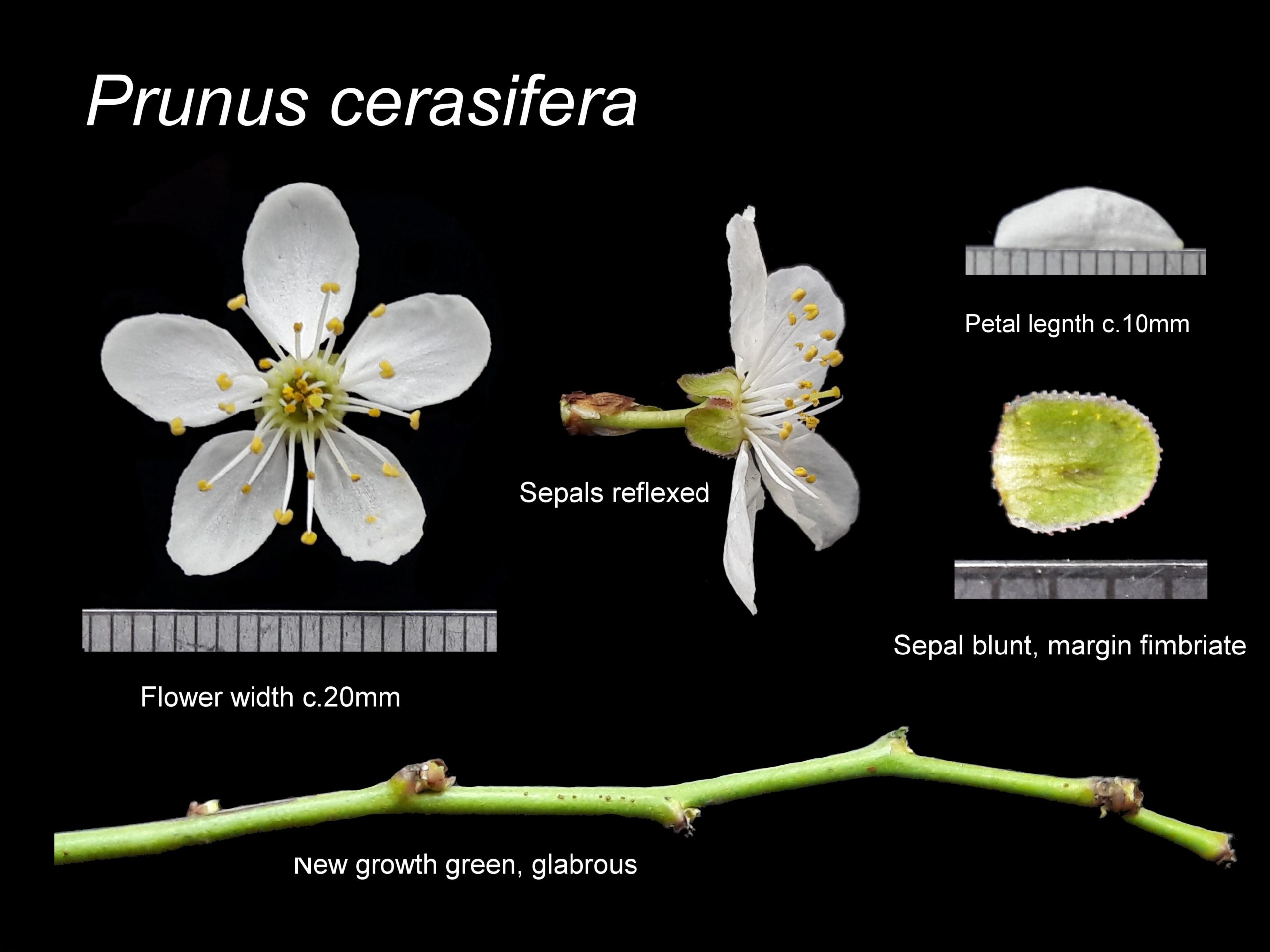
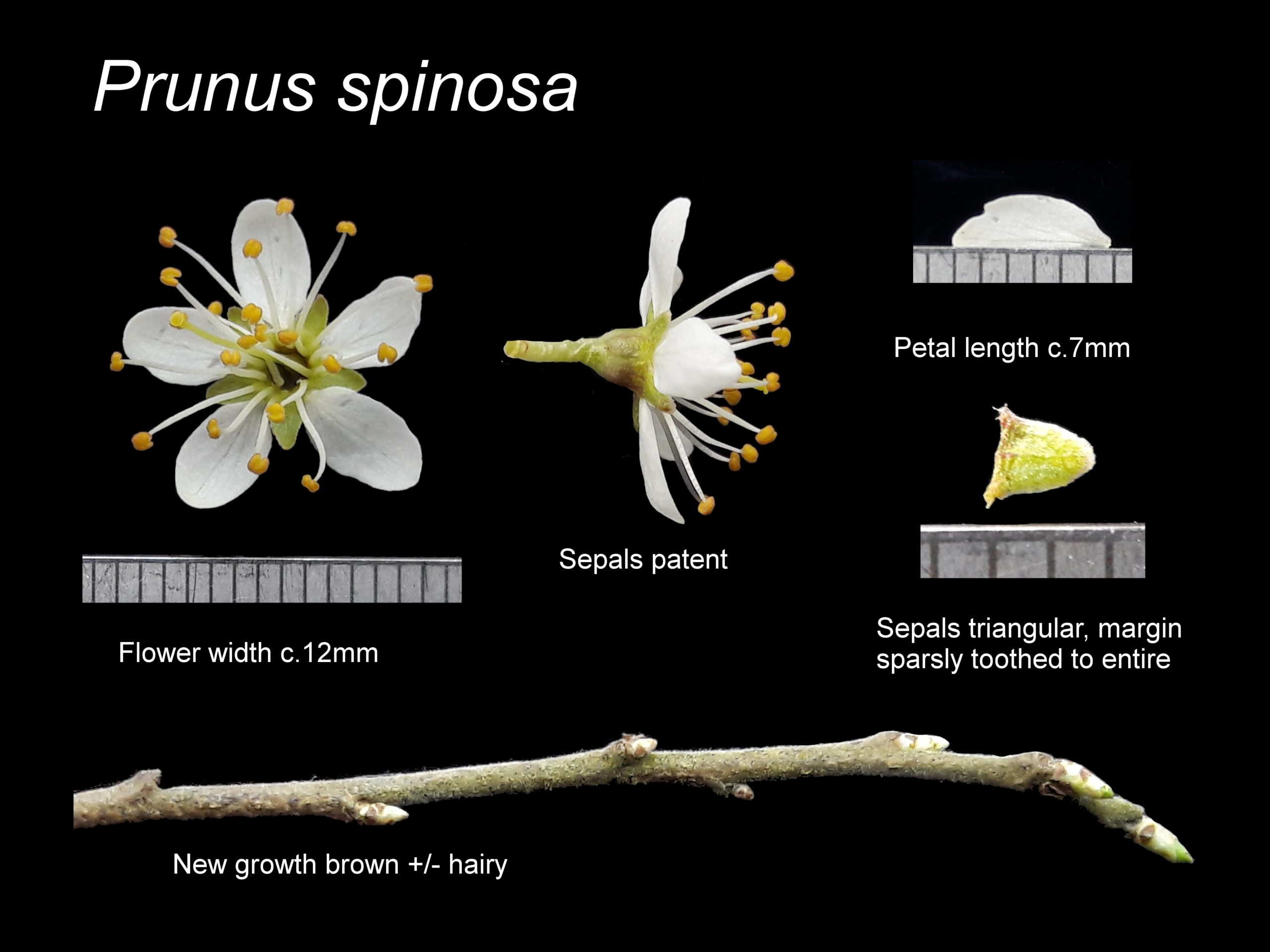
Check out these pages too:
- Fern ID
- Grass ID
- Dandelion ID
- Plant ID videos on the BSBI YouTube channel
- The Plant Crib
- BSBI Species Accounts
- BSBI Handbooks for tricky plant groups
- ID resources for the more experienced botanist.
Faith Anstey's ID booklets
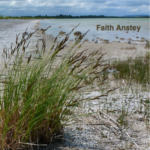
Recent plant ID workshops in Scotland have been based on the approach pioneered in Faith Anstey's user-friendly and inexpensive ID booklets. Details and booking links for workshops in 2023 can be found here. The booklets are available to purchase and could be used on any wild plants and grasses in your garden.
Faith said: "Specially designed to help you get started with ID, these booklets have no lengthy keys to decipher, using instead field characters and flowcharts. The Pocket Guide introduces wild flower identification through 'finding the family first'; the Grasses and the Sedges booklets concentrate on how to recognise the most common species".
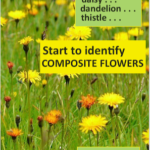
This report published on the BSBI News & Views blog describes workshops held in 2016 but is still worth reading, as it gives you an idea of Faith's approach to ID and you can see some sample pages from her Pocket Guide to Wildflower Families.
Faith's booklets 'Start to Identify Composite Flowers' (2021) and 'Wild Flower Flowcharts: species ID the easy way' (2022) are also available to order from her website.
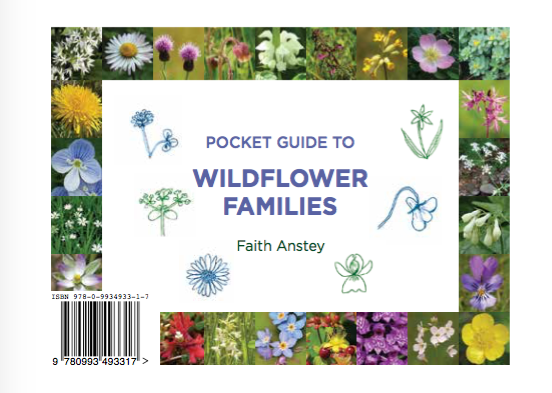
ID sheets by 'Dinky Moira'
The ID sheets below were produced for @wildflower_hour by "Dinky Moira" - so called because when you are taking your first steps in botany, you'll wish you had a dinky version of our friend Moira to pull out of your rucksack and ask her for help! Moira has very kindly made six ID sheets available to view or download here:
- Buttercups
- Geraniums (small-flowered Crane's-bills)
- Small White Brassicas
- Speedwells
- Strawberries: wild or barren
- Violets
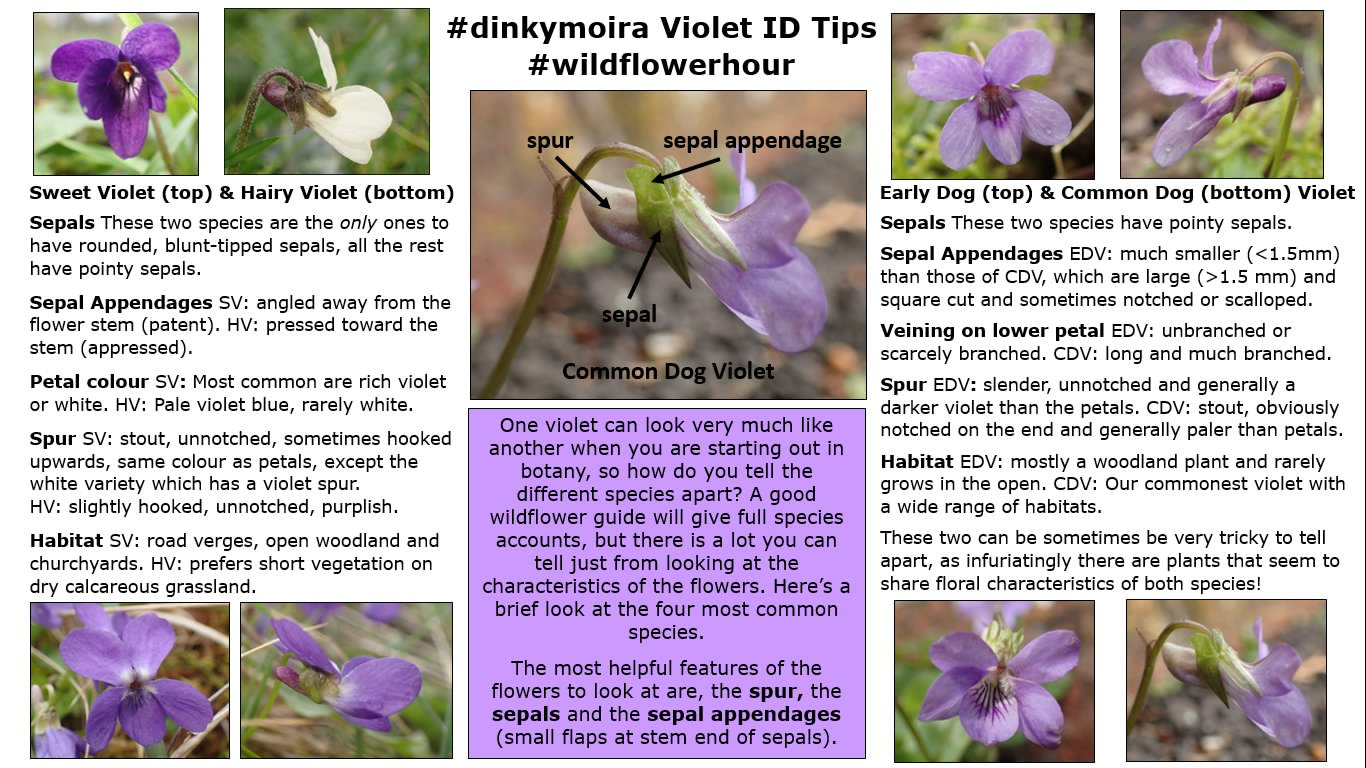
Online keys
Snowdrop identification by Mick Crawley has a helpful ID key.
There are some very user-friendly ID keys here - they are the work of Ken Adams, formerly BSBI's County Recorder for Essex.
You could also post photos on iSpot and ask for ID help - contributors are very helpful.
Try using BotanicalKeys: a free and easy online key, by Quentin Groom.
This new Plant ID for Beginners online key by Richard Milne aims to helps you identify which family your plant belongs to.
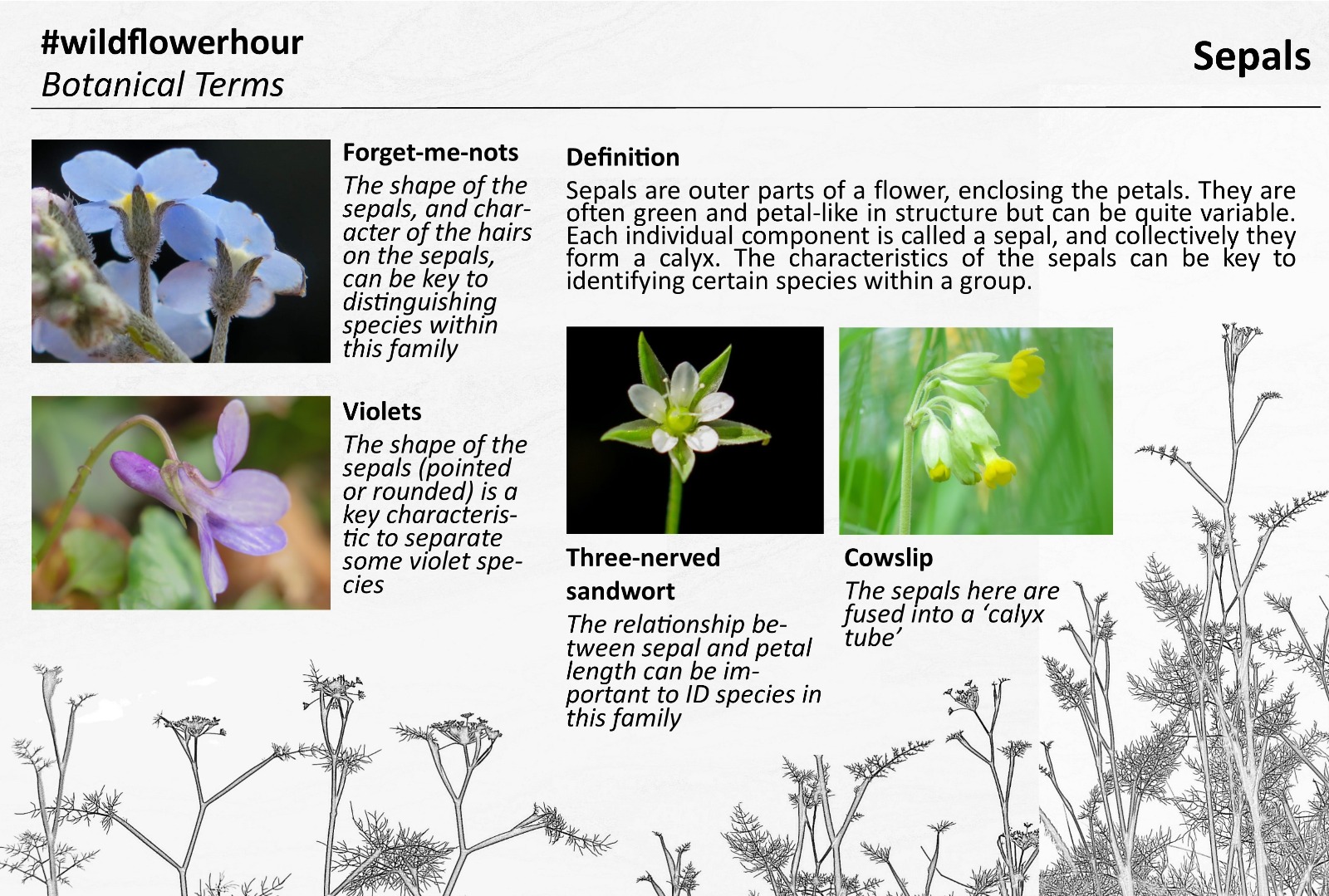
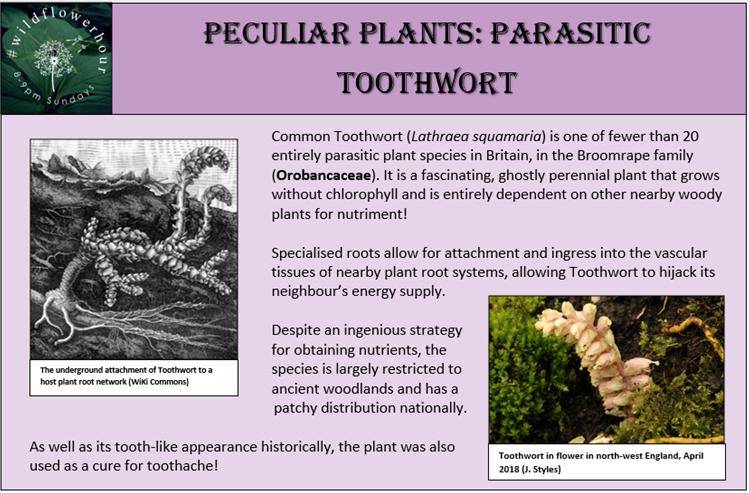
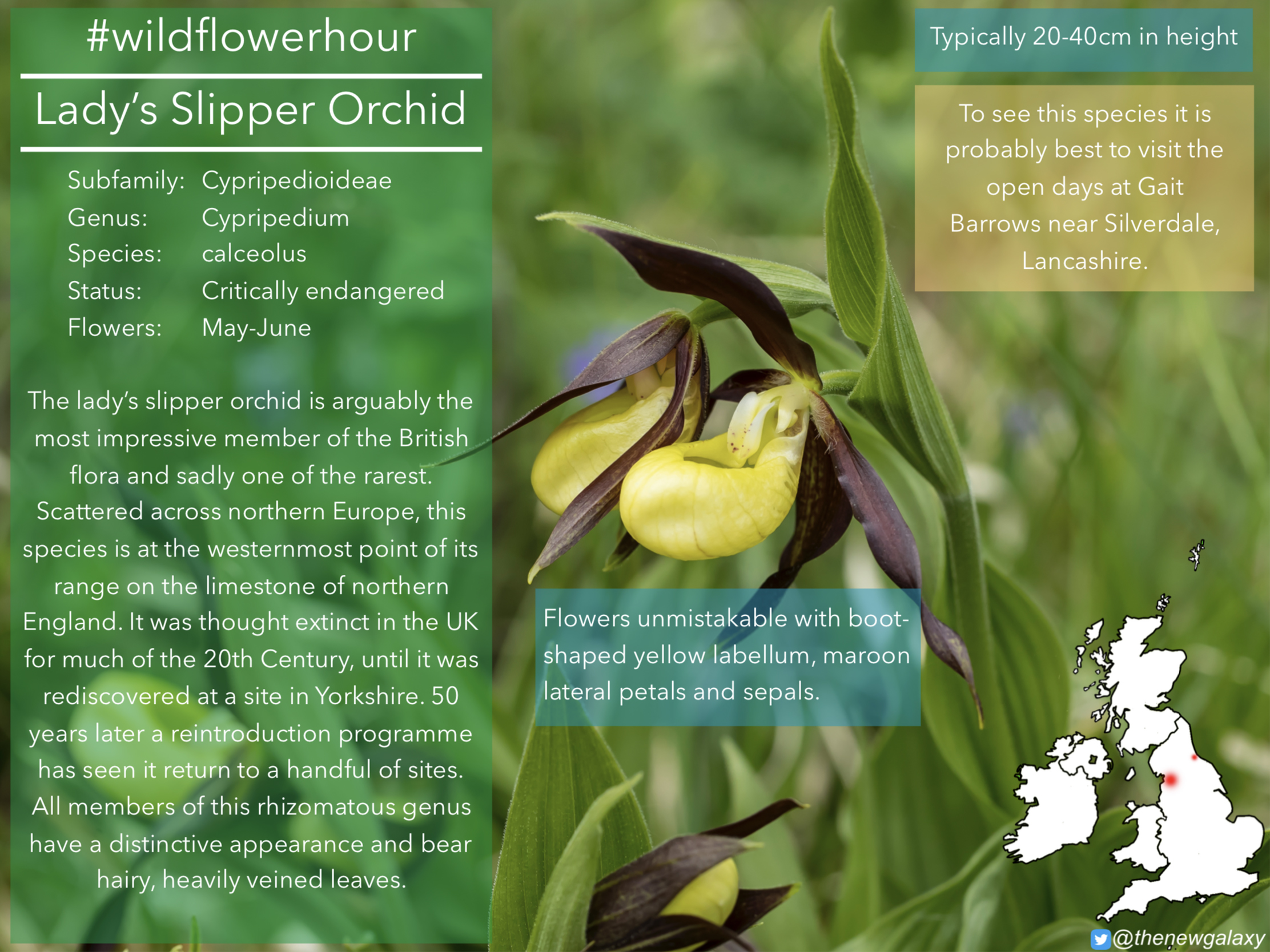
Plant experts
Members of the BSBI can make exclusive use of our network of 100+ plant experts, who will name difficult plants for you. There are two referees just for beginners; specialists in garden shrubs and cultivated trees; aquatics and alpines; as well as experts in orchids, grasses, tricky plant families...
Contact details for our experts/ referees are in the BSBI Yearbook, which is sent out to members each year in January and is available via our password-protected members-only area. If you’re not a member, and you are interested in plant identification, you may want to think about joining BSBI.